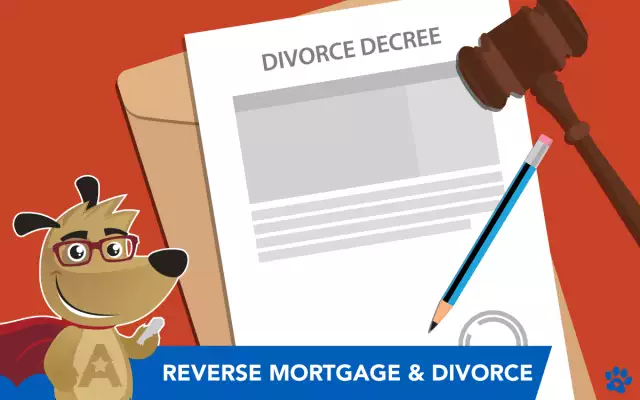Divorce And Mortgage | Your Divorce Mortgage Options 2022
Divorce And Mortgage | Your Divorce Mortgage Options 2022
Options when divorcing with a mortgage
Divorces are anything but simple. And having a joint mortgage loan can complicate the process even more.
But there are time-tested mortgage options for divorcing couples that may help both parties. These depend on factors such as the amount of equity in the home, how it was purchased and titled, and whether one person wants to keep the home.
Regardless of the complexity, almost any situation can be remedied with one of the options below.
In this article (Skip to…)
>Related: Cash-out refinance: Best uses for your home equity
Refinance the current mortgage
The cleanest solution when divorcing could be to refinance the existing mortgage and leave only one spouse’s name on the loan.
After the refinance closes, only the person named on the mortgage would be responsible for making the monthly payments. The person no longer named on the mortgage could then be removed from the home’s title.
If necessary, a cash-out refinance could pay the portion of equity that is due the departing spouse.
Refinancing into a new mortgage could be the simplest solution, but it works only when one spouse can qualify for the loan on their own. Mortgage eligibility will depend on:
The borrower’s income
Qualifying for a mortgage as an individual may be harder than qualifying as a married couple. Why? Because a single borrower often makes less money than a couple.
During the underwriting process, the lender will verify the single borrower’s income and compare it to his or her monthly debts, including credit card minimum payments and car payments.
If the single borrower’s income can support the new loan’s mortgage payment, then refinancing is a viable option.
The borrower’s credit score
The person refinancing the mortgage loan must have a high enough credit score to qualify. You can see credit score requirements to refinance here.
If your credit scores have fallen since you took out the current mortgage loan, you may no longer qualify for a refinance. You may be able to overcome a low credit score with a rapid rescore, but success using that method is far from certain.
Often, the only “fix” for a low credit score is to rebuild credit history which could take months, a year, or even longer.
Home equity
If you bought the home recently and made a small down payment — or if you already have a second mortgage that uses home equity — your home may not have enough equity for a refinance.
Lenders often want to see at least 3% in home equity before approving a refi. Equity measures the part of the home’s value that’s already paid off. It’s the value of your home minus the current mortgage balance.
If equity is a challenge for you, the following loan options may help.
Refinancing with low home equity
Certain refinance types allow you to remove a spouse’s name from the original mortgage, despite a home’s low equity position.
FHA Streamline Refinance
If you already have an FHA loan on the home, you can use the FHA Streamline Refinance to remove a borrower without checking home equity. However, the remaining spouse must show that they have been making the entire mortgage payment for the past six months.
A Streamline Refinance is best for those who have been separated for at least six months. But it is not ideal if your settlement agreement requires you to resolve your divorce mortgage situation right away.
VA Streamline Refinance
VA-eligible borrowers can use a VA Streamline Refinance to remove a spouse’s name from the current mortgage after a divorce. Typically, the spouse who is a veteran must remain on the home loan.
Only military personnel and veterans can use VA loans. So if the departing individual is the veteran, the remaining spouse would have to refinance into another loan type.
If the remaining spouse is eligible for a VA loan, they may also opt for a VA cash-out loan. This option allows homeowners to take out a new loan amount of up to 100% of their home’s current value. This feature could enable the remaining spouse to pay out the departing partner’s equity in the home according to the divorce decree.
USDA Streamline Refinance
Loans backed by the U.S. Department of Agriculture, known as USDA loans, can also qualify for Streamline Refinancing.
Just like VA and FHA loans, a USDA Streamline Refi works only if you already have a USDA loan. USDA loans work in rural and suburban areas and only for borrowers who fall within income limits.
Conventional refinance
Conventional loans do not offer a Streamline Refinance option. However, it’s still possible to refinance a conventional loan with low home equity.
Fannie Mae and Freddie Mac — the two agencies that regulate most conventional loans — only require 3% equity in the home to refinance. That means your LTV must be 97% or lower.
Keep in mind that these rules can vary by lender. Some may require a higher level of equity to refinance than Fannie and Freddie’s minimum. So if low equity is a concern for you, shop around with a few lenders to find one that’s more forgiving.
Divorce mortgage options without refinancing
Refinancing offers a chance to start over with a new mortgage after a divorce. But if you can’t qualify for a refinance — or if you’re worried about today’s mortgage rates increasing your monthly payments — you’ll need to find another solution.
Buy out the spouse’s share of the home equity
In many states, the court will split the built-up equity in a home between the two divorcing partners.
But unless you already have enough cash available to buy out your spouse’s share, you’ll need to access the home’s equity to buy out your ex-spouse.
A home equity loan can usually do the job. You won’t have to refinance the first mortgage, so if you got a great interest rate during the pandemic, you can keep it.
You’d keep making your current mortgage payment and you’d add a second monthly payment to pay off the home equity loan. Closing costs are low and these loans are faster and easier to get than a primary mortgage.
Sell the home
Selling the home is another way to split up community property. You and your spouse would agree to place the home on the market and then split the profits when it sells.
You would still need to determine who pays the mortgage before the sale closes, but this is a short-term rather than a long-term challenge.
This is a last resort for a lot of married couples because it means both spouses have to move. And, it means cashing out a real estate investment. If the housing market in your area has cooled, you could lose money.
Equity is also important when selling. It typically costs between 7% to 10% of your home’s value to sell. This total consists of agent fees, taxes, title insurance, and other closing costs.
In other words, you may have to sell a home for $330,000 to break even if you owe $300,000. Otherwise, you might need to come in with a check at the closing of the sale.
If you can’t sell your home or refinance your mortgage loan, there is one more option. But it can present new risks.
Keep the home and mortgage
If you’re not willing or able to sell or refinance the marital home, your other choice is to keep the home and the mortgage intact. Both parties would remain on the existing loan and liable for the payment.
You’ll need specific language in the divorce agreement about who will make the mortgage payments each month. Maybe your former partner will pay the mortgage, even though you and your children will be the ones living in the home.
Or, the divorce settlement could require you and your ex-spouse to pay half of the mortgage each month.
Risk to future home loan eligibility
Keep in mind that leaving your ex’s name on the mortgage may impact their ability to buy a new home in the future.
A borrower’s debt-to-income ratio (DTI) is crucial when qualifying for a mortgage. When a potential home buyer is listed on another mortgage, that debt appears in their DTI and could affect the new loan application.
Risk of missed payments
This situation can also lead to missed mortgage payments if your former partner won’t or can’t abide by the divorce decree.
Say your former spouse is supposed to pay the mortgage each month, but your name remains on the loan. If your former partner misses a payment, your three-digit FICO score on your credit report could fall by as much as 100 points.
Worse case scenario, you could lose the home and its value to foreclosure.
Both partners are still jointly liable
When your name remains on the loan, your mortgage lender considers you equally responsible for making the payments each month.
Your mortgage holder will not dismiss late payments, even when your divorce attorney has negotiated your ex-spouse’s responsibility in the settlement agreement.
For this reason, a shared mortgage after a divorce might only work well in amicable divorces.
Whatever you decide, protect your credit rating
You can take steps to protect yourself financially when dealing with a mortgage post-divorce.
The divorce papers could state that your former spouse will live in the home and apply for a refinance at a certain point. When the refinance is complete, it will remove your spouse’s name from the mortgage.
Your divorce settlement might state that your ex-spouse will keep making the mortgage payments until the refinance officially closes, and you are no longer responsible for the original mortgage.
You might provide additional protection for yourself by requesting your divorce attorney to insert a clause in your settlement agreement. It would say that if your ex-spouse doesn’t close the refinance during a certain period, the spousal home that you once lived in will be put up for sale.
Remember, though, that no matter what your divorce papers say, you can never fully protect yourself from the actions of your former partner when a mortgage is involved. Even if the divorce settlement includes penalties, there is no guarantee that your ex will keep making those payments.
Divorcing couples who want the safest option for all parties may want to sell the home or refinance the mortgage.
’Divorce mortgage’ FAQ
What are current refinance rates?
Divorce is complicated, but it does not have to be an end to your homeownership goals.
Refinancing is often the best way to take a former spouse’s name off the mortgage. A refi could also generate cash back to pay off your ex’s share of the equity, if necessary.
Refinance rates have risen this year, but they vary by borrower and loan type. See what kind of deal you can get by applying for a pre-approval.





